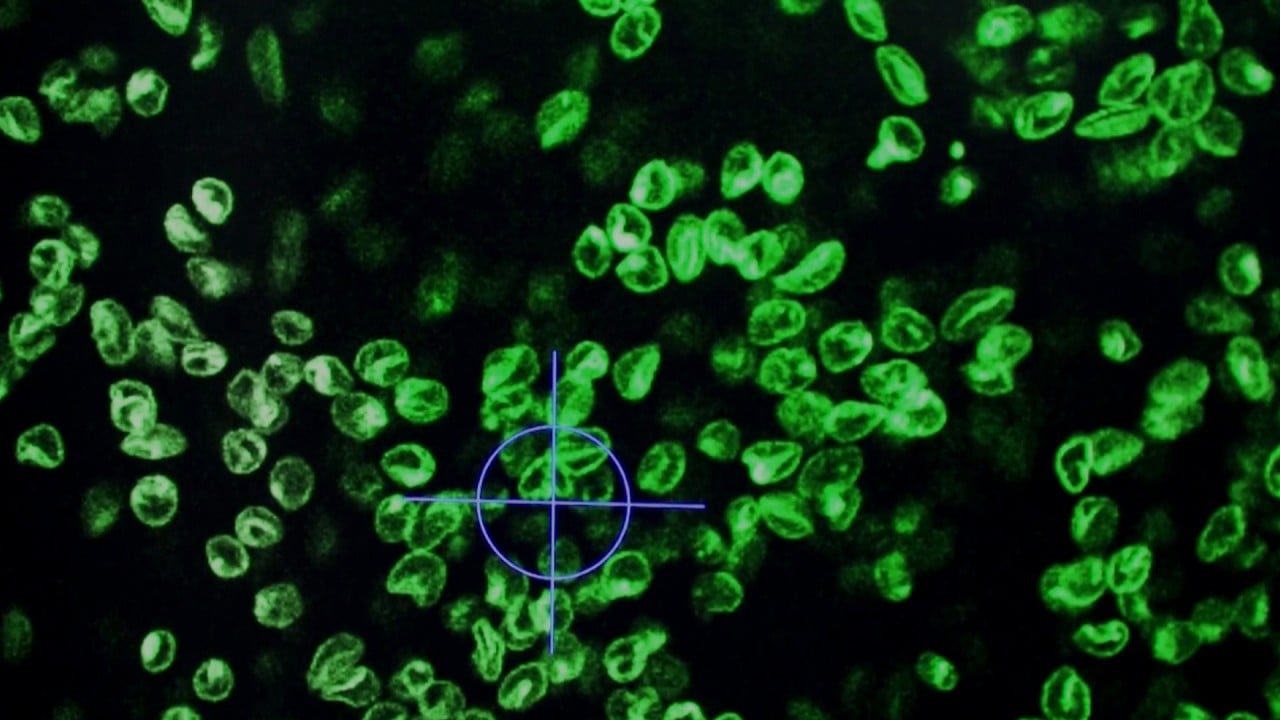Around two million people worldwide suffer from inherited retinal diseases, the most common being Retinitis pigmentosa (RP), which causes progressive vision loss and eye disorders. There is no effective treatment.
But by correcting the genetic mutations that lead to the disorder, gene editing has the potential to restore normal protein expression and offer a lifelong cure, the researchers said.
Bi Changhao and Zhang Xueli, from the Chinese Academy of Sciences’ Tianjin Institute of Industrial Biotechnology, along with Wang Xiaolin and Sun Xiaodong from the National Clinical Research Centre for Eye Diseases, used gene editing to treat RP in mice.
According to the paper, traditional approaches to gene therapy – which involve injecting healthy copies of the affected gene into retinal cells – could not guarantee a balanced expression of the protein, and artificial DNA may degrade over time.
Chinese scientists say their new gene-editing tool is precise and safe
Chinese scientists say their new gene-editing tool is precise and safe
“We overcame this challenge by employing direct gene editing to correct the pathogenic mutation in situ,” Zhang wrote. “The edited gene remains within the original cell, thus it maintains natural expression levels of the protein.”
Advertisement
The team used an Adeno-associated virus (AAV), a commonly used vector in gene therapy trials, to deliver base editors into the retinal cells of mice that carried a specific mutation closely resembling the phenotype found in human RP patients.
AAV is considered a safe “postman” because it does not integrate into the host genome and typically does not trigger an immune response.
According to the paper, the base editing system precisely corrected the mutated gene site in the retinal nerve cells of all the mice in the study, after a single retinal injection.
The researchers said their method achieved a correction rate of up to 49 per cent, significantly prolonging the lifespan of the photoreceptor cells in the mice’s eyes.
“Subsequent examination and behavioural tests revealed significant improvements in the vision of the treated mice,” according to a report posted on the CAS website on Monday.
Advertisement
“This breakthrough opens a new avenue in the treatment of inherited retinal diseases, offering a glimmer of hope for those suffering from RP,” the report said.
The eye’s ability to limit its inflammatory immune response – called immune privilege – makes it of great interest to gene therapy researchers, along with its unique visual and surgical accessibility.
Advertisement
But Zhang and his team cautioned that there is still a long way to go before we can expect the treatment to be developed for use in humans with RP.
China issues ‘most comprehensive’ bioethics rules since gene-edited baby scandal
China issues ‘most comprehensive’ bioethics rules since gene-edited baby scandal
“No gene editing therapy has yet been approved for eye diseases. Further efforts should be made before this therapy could be introduced to human patients,” Zhang said in the paper.
Advertisement
“For example, detailed dose-response testing is highly needed to characterise the kinetics of in vivo base editing activity,” he said.
According to the paper, the study could also help with research into gene-editing technology’s potential to offer hope to people with sickle cell disease and other rare genetic disorders.
“Our findings might accelerate the development of base-editing based gene therapies. Other rare diseases caused by single-nucleotide variations includes sickle cell disease and thalassemia,” Zhang said.
Advertisement


